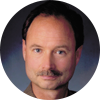What will be the chiropractic profession's response to the news that medical care cannot meet the U.S. public's demand in the coming two decades?
When I was a student at Palmer College of Chiropractic West in the mid-1980s, chiropractic attorney extraordinaire George McAndrews gave a lecture to the students and staff about the Wilk trial. Mr. McAndrews conveyed the conventional wisdom at the time, based on forecasts by the Council of Graduate Medical Education and others, that there would be a large surplus of MDs by the end of the millenium. It appeared from several perspectives that the MDs who would not be driving cabs would compete fiercely with chiropractic and chiropractors for business in the musculoskeletal and primary care arenas.
Over the past 70 years, the demand for medical services has exceeded the gross domestic product (GDP) by 50 percent annually. Now with the post-WWII baby boomers creating a high demand for medical services years, the coming shortage appears to be extreme. How can the chiropractic profession help meet this challenge?
Clearly, a chiropractic profession growing in numbers and acceptance could take a strategic role in defining its role in integrative health care delivery. From my perspective, we should learn the language and system of allopathic medicine to facilitate chiropractic inclusion in integrative care delivery. This "inclusion" is already occurring in some areas. In a recent course held in Connecticut, an attending doctor of chiropractic stated that the internal medicine medical physician he worked with reported that at a prestigious East Coast medical college, all residents were told to associate with a chiropractor when they set up practice. The intention was clear: Chiropractors complement many of the functions of primary care. Further, these complementary functions were precisely those that biomedicine has a paltry number of tools to address, namely rest and NSAIDs.
As most practicing chiropractors soon discover, they become the primary health resource for their patients, with many questions about medications and surgeries arising in the course of the day. In addition, new patients report in their histories that they are taking nine medications with exotic names, each with potential side-effects and interactions with other drugs. Patients come to chiropractors to get another point of view - one based on health and hygiene, not illness treatment. And many new patients come to chiropractors through listings in HMOs, PPOs and EPOs alongside the medical doctors. The patient expectation is often that chiropractors, the "un-medicine", know enough about medicine and medical treatments and can help sort out health problems with new eyes, and refer to the best medical provider if chiropractic treatment cannot help. This is true integrative medicine in which chiropractors work with, if not within the greater health care delivery system, providing a conservative intervention with few dangerous side-effects and better health outcomes.
The health crisis has many facets, including the risks and costs of an over-technicalization of conditions that could be relieved or reduced by conservative means. While at Palmer West, I implemented student rounds in local spine care centers and emergency rooms. Two university-based hospitals also discussed with me possibilities and potentials for including chiropractic students or graduates in formal residencies in emergency and orthopedic medicine. It hailed a new era for chiropractic, if we would but consent: chiropractors working side-by-side with medical residents of their own age on 12-hour hospital calls with pagers. I found medical physicians were very receptive. Could it be that the allopathic physicians were exploring with me what chiropractic may have to offer the future of health care? Most, but not all, of the participating chiropractic students were very grateful to see other approaches to spine care.
Chiropractic is more than simply spine care. It is a means to health focusing on hygienic principles: restoring health through strengthening the body's capacity to heal. But as health care moves toward specialty "focused-factories," chiropractors will need to say who they are and what they can do in the language of outcomes and cost-benefits. There are heart centers in every metropolitan area in the U.S. Some areas also have spine, pain and hospital-based complementary and alternative medicine clinics. Why are chiropractors not included? Will they be? What specifically do chiropractors have to offer? We have to present ourselves in terms the rest of the world can understand, while showing we can reduce health costs. For instance, did you know that from an allopathic point of view, there is no known cure for sacroiliitis?
For a century, the chiropractic profession has had to defend itself against medical deceit and destruction. Now the public demand and health care crisis and shortage has changed everything. More than ever before, there exists an opportunity to make our distinctive chiropractic contribution to health care to the benefit of the public.
J. Michael Menke,MA,DC
Palo Alto, California
Click here for previous articles by J. Michael Menke, MA, DC, PhD.





